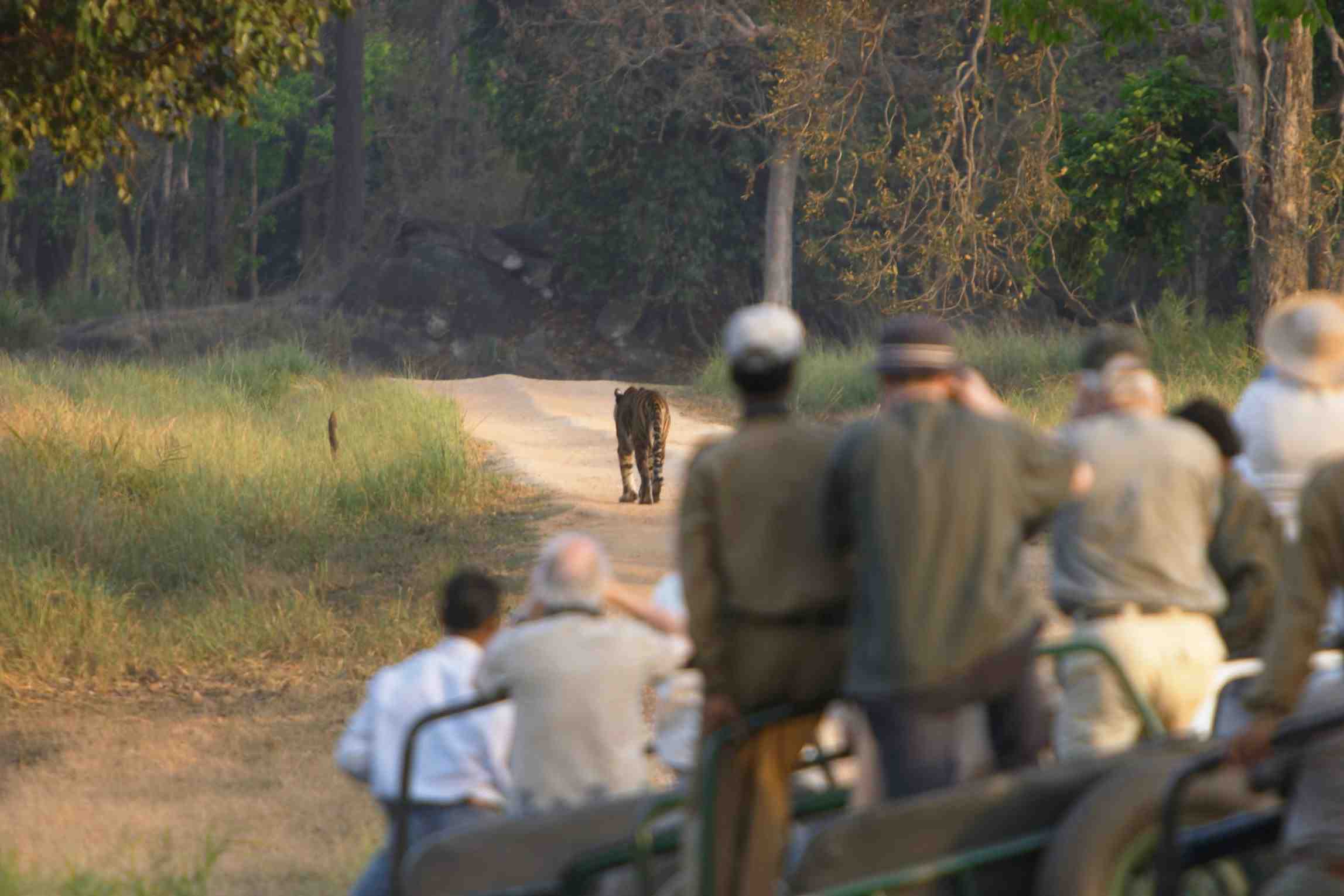India is the proud home to 70% of the world’s tiger population, making it a remarkable haven for these magnificent species. When considering the global population of tigers, there are eight subspecies, three out of which are now entirely extinct from the wild. This restricts only a few destinations, which are considered to be the best places to see tigers in India.
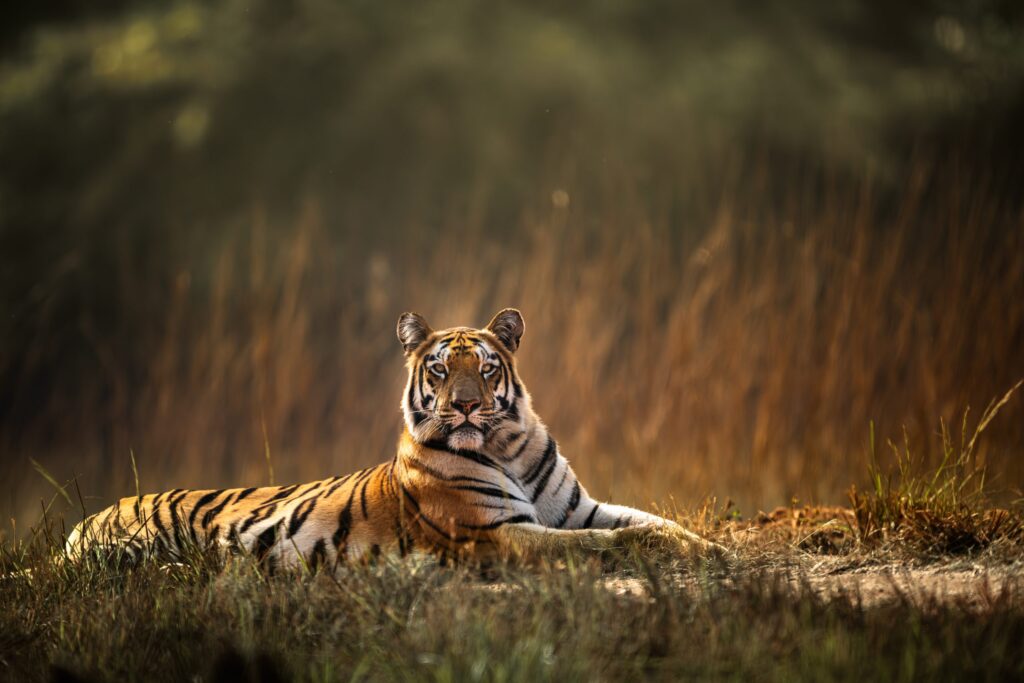
The Royal Bengal Tiger stands out among the magnificent big cats, thriving due to the dedicated conservation efforts undertaken in India. Out of the five subspecies, three tigers hold the prestigious title of national animals. The Royal Bengal Tiger (Panthera tigris tigris) holds the honor of being the national animal of India and Bangladesh. The Malayan Tiger (Panthera tigris malayensis) holds the same title in Malaysia, while the Siberian Tiger (Panthera tigris altaica) represents South Korea as its national animal.
Read more: Luxury Tiger Safari In India
The Best Places To See Tigers In India
The best places to see tigers in India are Bandhavgarh, Kanha, Pench, Tadoba, Panna, Jim Corbett and Ranthambore. The Royal Bengal Tiger stands out among the magnificent big cats, thriving due to the dedicated conservation efforts undertaken in India. Furthermore, India undeniably remains the optimal location for witnessing tigers in their natural habitat.
1. Kanha National Park, Madhya Pradesh
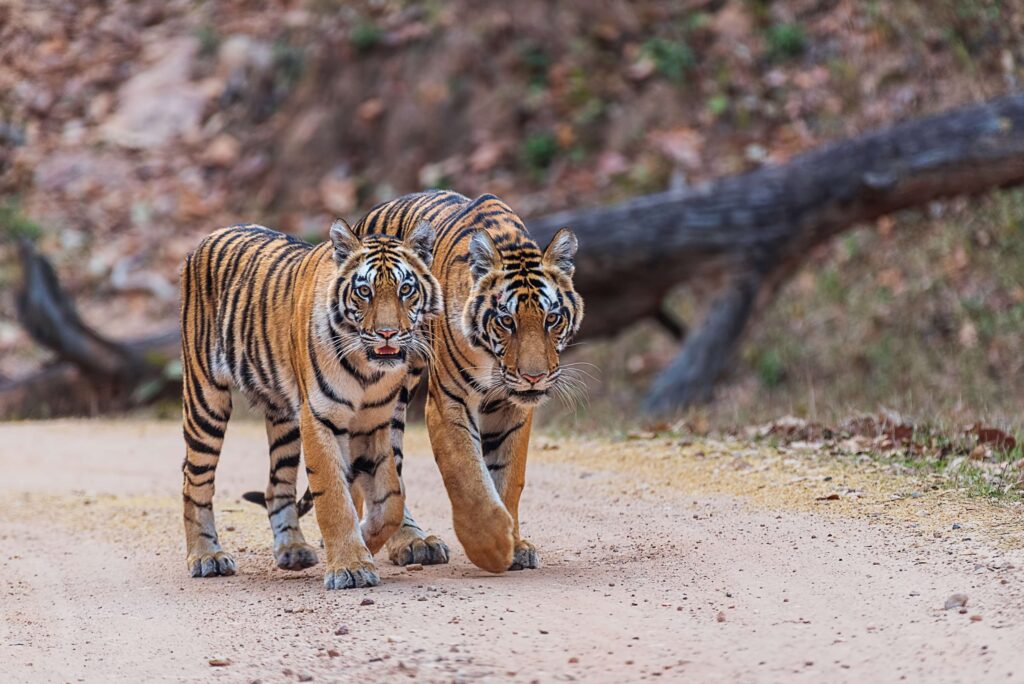
Kanha National Park, the largest park in Central India, encompasses an impressive 1949 sq.km of the land. Nestled in Maikal range amidst the sylvan settings, this park boasts stunning Sal woodlands and offers exceptional opportunities to witness tigers, making it one of the best places to see tigers in India.
The residence of Munna, a distinguished tiger known for its distinctive CAT marking on the forehead, also renowns it. Unfortunately, he has passed away. The park is effectively divided into four zones, namely Kisli, Kanha, Mukki, and Sarhi. In addition, people celebrate Kanha for once being the dwelling place of the rare Hard-ground Barasingha. However, they have now been relocated to Satpura.
Read More: Popular Tigers of Kanha
How to reach Kanha National Park:
Jabalpur serves as the closest railhead and airport for travelers.
Where to stay in Kanha National Park:
Kanha Earth Lodge – This eco-conscious resort in Kanha is known for its remarkable design, exceptional hospitality, and appeal to travelers seeking a serene, sustainable experience.
2. Panna National Park, Madhya Pradesh
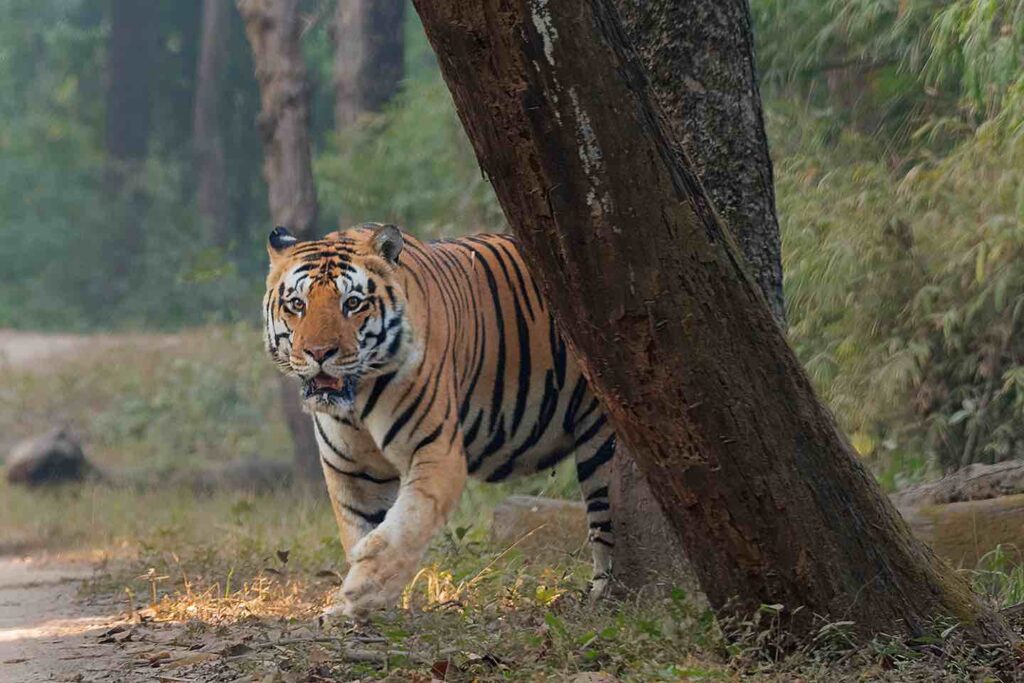
Panna National Park, sprawling across 1645 sq.km, was established in 1981. Situated at the confluence of the Gangetic plains and the Deccan peninsula, the Panna hills serve as the primary catchment area for the Ken River, which is vital for the park’s ecosystem. The region comprises predominantly open forests, offering excellent opportunities for observing tigers and other mammals. Additionally, it sustains closed canopy forests, open woodlands with short grass and undergrowth, and expansive Savannah woodlands reminiscent of sub-Saharan habitats. Moreover, the area includes tall grasslands and degraded scrub, showcasing a diverse range of ecosystems.
Panna National Park offers a serene escape from the bustling crowds as well as it provides the opportunity to witness these magnificent species up close. The park features two entry gates, namely Madla Gate and Hinouta Gate.
How to reach Panna National Park:
Khajuraho serves as the closest railway station and airport.
Where to stay in Panna National Park:
Ken River Lodge – Located adjacent to the vital Ken River, this splendid lodge stands as an exceptional accommodation choice.
3. Bandhavgarh National Park, Madhya Pradesh
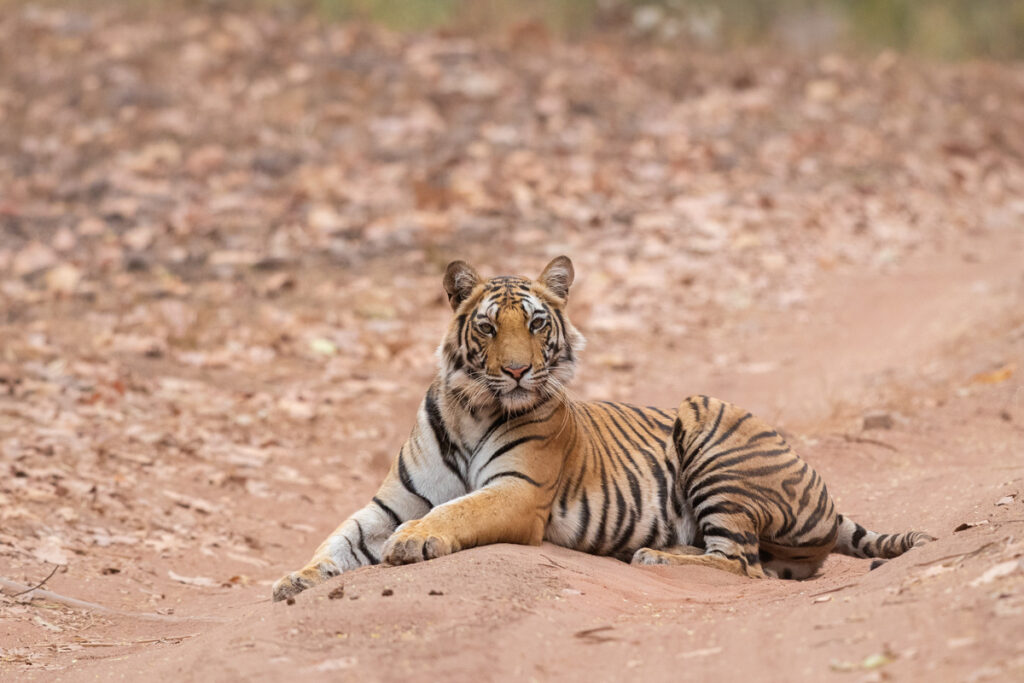
The mention of Bandhavgarh evokes strong emotions among Tiger enthusiasts of all ages. However, this renowned location was once the domain of Sita and Charger, two iconic tigers who captured the hearts of many and put Bandhavgarh on the tourism radar. Despite their passing, their legacy endures.
Bandhavgarh National Park boasts one of the highest concentrations of tigers in the country, thus making it one of the best places to see tigers in India offering unparalleled opportunities for tiger sightings. Bandhavgarh is also a much desired destination among nature lovers for its scenic landscape. The park is divided into three distinct zones – Tala, Magadhi, and Khitauli, all offering great sightings.
Read More: Tigers of Bandhavgarh
How to reach Bandhavgarh National Park:
The closest railway station is located in Umaria, however the nearest airport can be found in Jabalpur.
Where to stay in Bandhavgarh National Park:
Kings Lodge – This luxurious lodge situated near Tala gate is an ideal choice for the travelers seeking opulence and comfort. Hence, this premier resort in Bandhavgarh guarantees an unforgettable stay.
Treehouse Hideaway – This establishment offers a superb blend of upscale yet rugged lodging within a densely wooded property, making it an ideal location to intimately connect with the natural environment.
4. Pench National Park, Madhya Pradesh
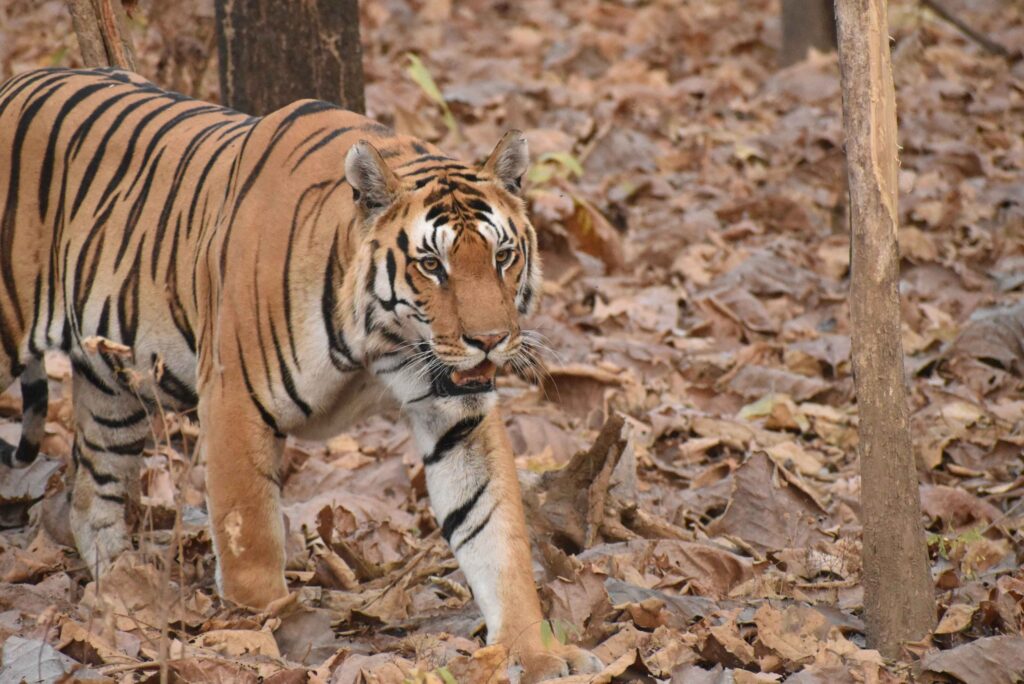
Pench National Park, one of Madhya Pradesh’s renowned tiger reserves, stands out with its Teak-dominated forest, distinct from the Sal-dominated forests of neighboring Kanha and Bandhavgarh. Moreover, spanning 1200 sq.km and straddling across two states – Madhya Pradesh and Maharashtra alongside the Pench River, this park also boasts a historical mention in the 400-year-old Ain-i-Akbari.
Additionally, its significance is further enhanced by being the original setting for Rudyard Kipling’s iconic work, “The Jungle Book”.
As the realm of Sher Khan, tigers take center stage in this park, hence making Pench one of the best places to see tigers in India. The core zone of the park features three entry gates, namely Turia gate, Karmajheri gate and Jamtara gate.
Read More: Best Gates In Pench National Park
How to reach Pench National Park:
Chhindwara and Jabalpur serve as convenient rail heads while Nagpur stands as the nearest airport.
Where to stay in Pench National Park:
Pench Tree Lodge – This prestigious lodge is renowned as a top-rated resort in Pench. Providing guests with the opportunity to immerse themselves in nature while indulging in contemporary comforts and amenities. Moreover, guests can experience the luxury of tree houses nestled beneath the shade of Mahua trees.
5. Tadoba National Park, Maharashtra
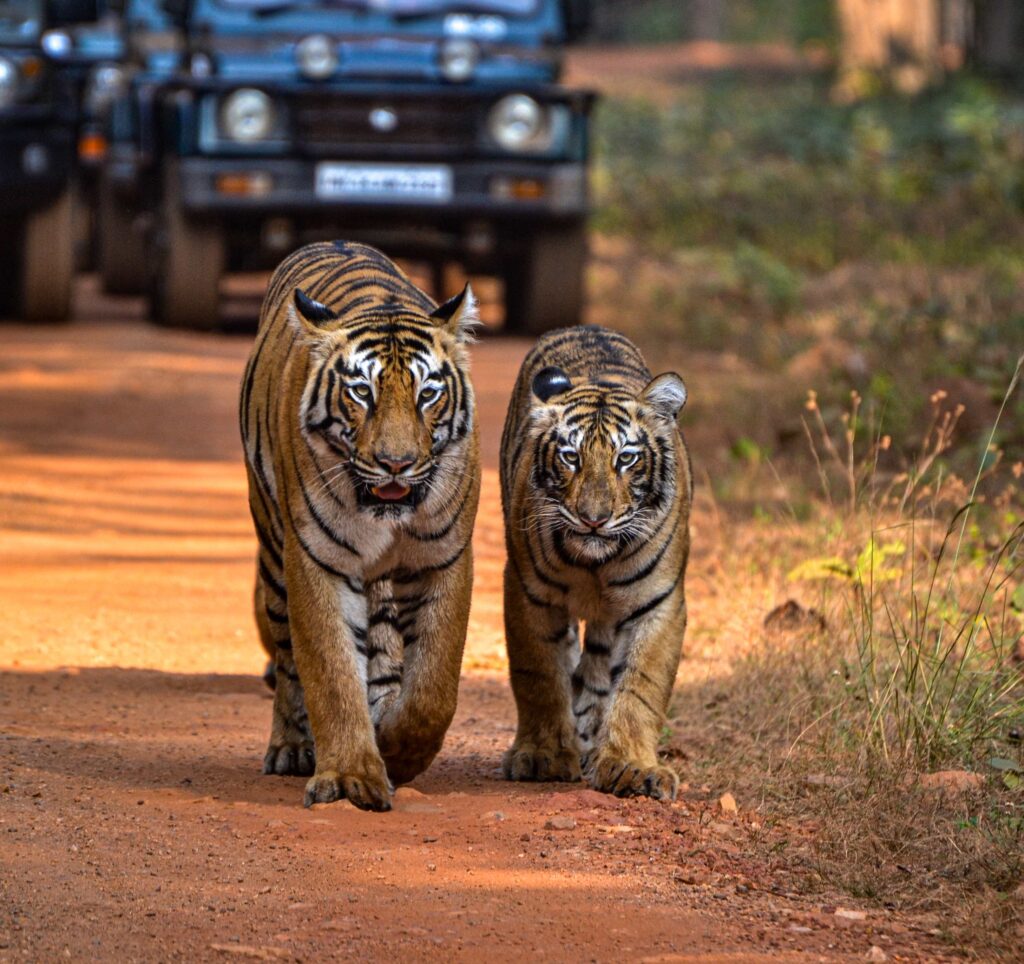
Tadoba National Park, also known as Tadoba-Andhari Tiger Reserve, stands as the oldest and largest national park in Maharashtra. The park spans an impressive 1727 sq.km of southern, tropical dry deciduous forest largely populated by teak wood. The awe-inspiring expanse adorns itself with not only teak, but also bamboo.
Additionally, it also features a breathtaking landscape of expansive valleys, lush marshlands, and pristine lakes that serve as a vital sustenance for the varied prey bases of the majestic Royal Bengal Tigers. The Tadoba Tiger Reserve comprises three distinct forest ranges: Tadoba north range, Kolsa south range, and Moharli range. Tadoba emerges as one of the best places to see tigers in India during the monsoon season too, as the buffer zones are open with high-density tigers.
Read More: Best Gates in Tadoba
How to reach Tadoba National Park:
Chandrapur and Wardha are the closest railway stations while Nagpur stands as the nearest airport.
Where to stay in Tadoba National Park:
Waghoba Eco Lodge – This luxury eco-lodge draws inspiration from local tribal villages, serves as a premier resort in Tadoba. The use of handmade Adobe bricks, Guna vault roof tiles, stone, and broken ceramics contributes to its rustic yet deluxe appearance. Additionally, it also aids in lowering the ambient temperature amidst the harsh heat of Tadoba, ensuring a comfortable sojourn.
6. Jim Corbett National Park, Uttarakhand
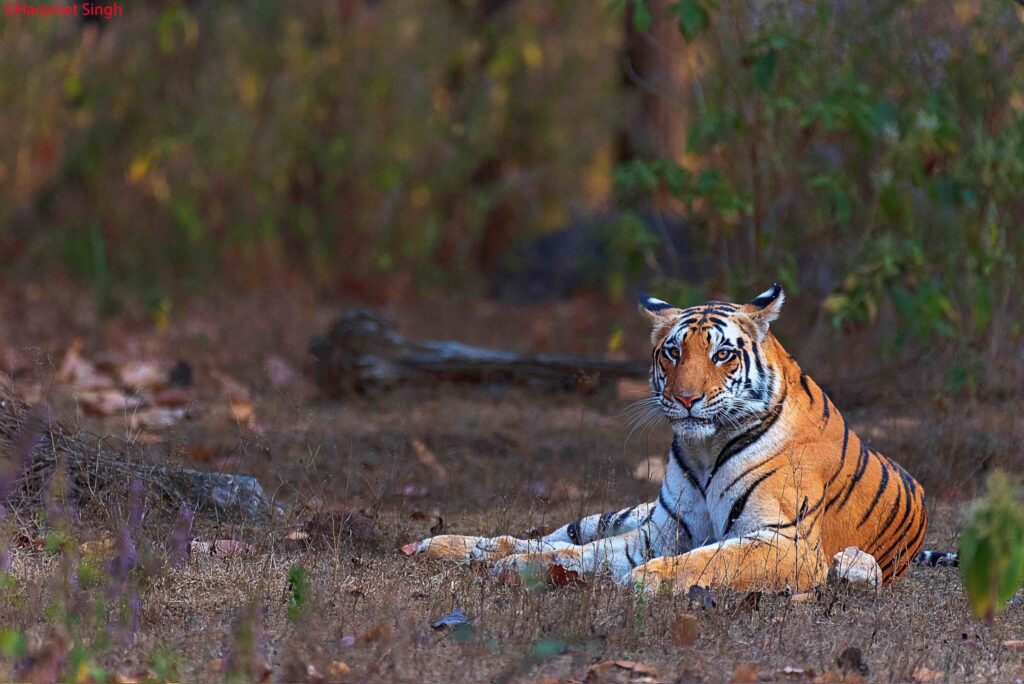
Located within the foothills of the majestic Himalayas, the Jim Corbett National Park is the oldest and most picturesque national park in India. Additionally, as the inaugural sanctuary to fall under Project Tiger in 1973, it stands as a testament to the preservation of wildlife.
This park serves as an ideal habitat for a variety of majestic wildlife such as the Royal Bengal Tiger, the Asiatic Elephant, and a diverse array of other wild animals and reptiles. The harmonious blend of rivers, chaurs (grasslands) and Sal forest creates an environment that fosters a diverse array of insects, birds, and animals, allowing them to flourish in abundance. Furthermore, the park’s territory is divided into five zones: Dhikala, Jhirna, Bijrani, Dhela, and Sonanadi.
How to reach Jim Corbett National Park:
The closest railway station is located in Ramnagar, while the nearest airport can be found in Pantnagar.
Where to stay in Jim Corbett National Park:
Forest Rest House – For travelers seeking to fully immerse themselves in the untamed beauty of a national park, the optimal choice is to lodge at a Forest Rest House, within the park grounds. There is simply no comparison to the exhilarating blend of joy and trepidation that arises when the sounds of diverse wildlife echo through the dense, shadowy forest. Dhikala Forest Rest House and Gairal Forest Rest House are widely recognized in this region.
7. Ranthambore National Park, Rajasthan
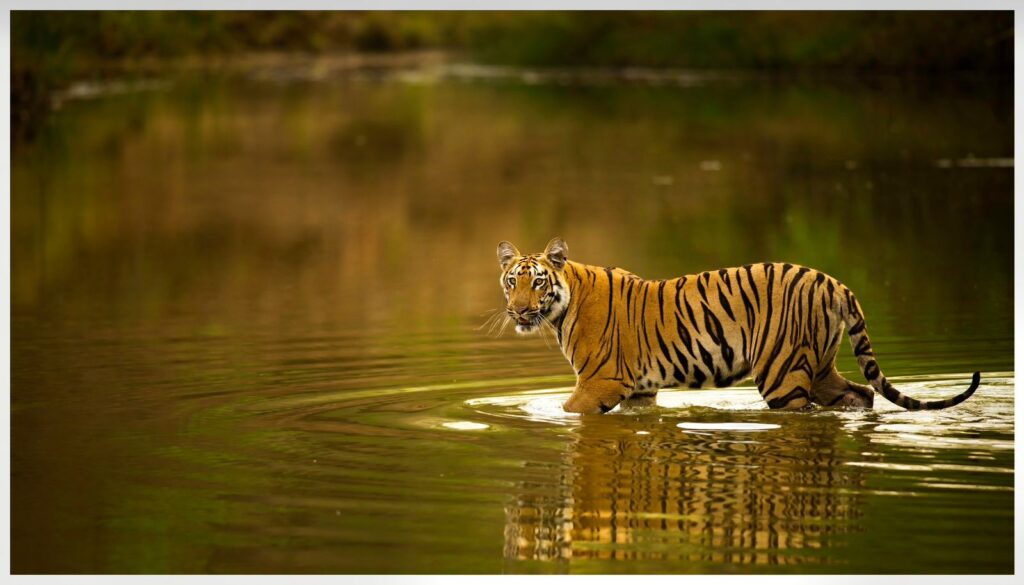
In the Sawai Madhopur district of Rajasthan, lies the renowned Ranthambore National Park, home to the Royal Bengal tigers, therefore being one of the best places to see tigers in India. Ranthambore is not only worth visiting for the exhilarating experience it offers, but also for its stunning terrain. Additionally, spanning from the gentle slopes of the Vindhyas hills to the rugged peaks of the Aravallis, and from expansive flat valleys to narrow rocky gorges, Ranthambore encompasses a unique and captivating landscape.
This park encompasses 10 safari zones, namely Zones 1-10. Although the park originally consisted of 5 zones, the additional 5 were incorporated due to its increasing popularity.
How to reach Ranthambore National Park:
Sawai Madhopur serves as a convenient rail head while Jaipur stands as the nearest airport.
Where to stay in Ranthambore National Park:
There are numerous accommodation options available in every price range, including the internationally acclaimed Aman, Oberoi, and Taj.
The Best Time To See Tigers In India

Winter Season:
The winter tiger sightings are reliably consistent, providing guests with ample opportunities to observe the majestic species as they roam, while the surrounding forest remains rich and vibrant with lush greenery.
Summer Season:
During this season, the rise in temperature and depletion of water sources necessitate tigers to frequently change locations in search of water. This behavior significantly increases their presence around waterholes and rivers, offering exceptional opportunities for sightings. However, the weather conditions could be rather hot.
Safaris scheduled during these times greatly enhance the chances of a successful sighting. Moreover, this season aligns with the Indian holiday season and experiences the highest influx of visitors.
The best time to see tigers in India is from February to April, which is when both seasons are at their finest.
Pre-Monsoon Season:
During the pre-monsoon period, prime tiger sightings can be expected from 15th June – the end of June. The rains during this time cool down the park, providing an optimal environment for guests to witness these majestic species.
From May till mid-June the weather conditions could be rather hot, hence this period again brings forth the best of both weather and tiger sightings, making it a favorable time for wildlife enthusiasts to visit.
These esteemed national parks and tiger reserves have played a pivotal role in establishing what we now recognize as some of the best wildlife destinations across the globe, providing a comprehensive experience in and of themselves.
When mapping out your wildlife expedition, it is important to include these best places to see tigers in India. And for an exceptional safari experience championing conscientious travel and luxurious lodging, Pugdundee Safaris would be your ideal partner.
Written & Contributed by: Tanvi Shah
+91-11-40146400
+91-11-40132687

